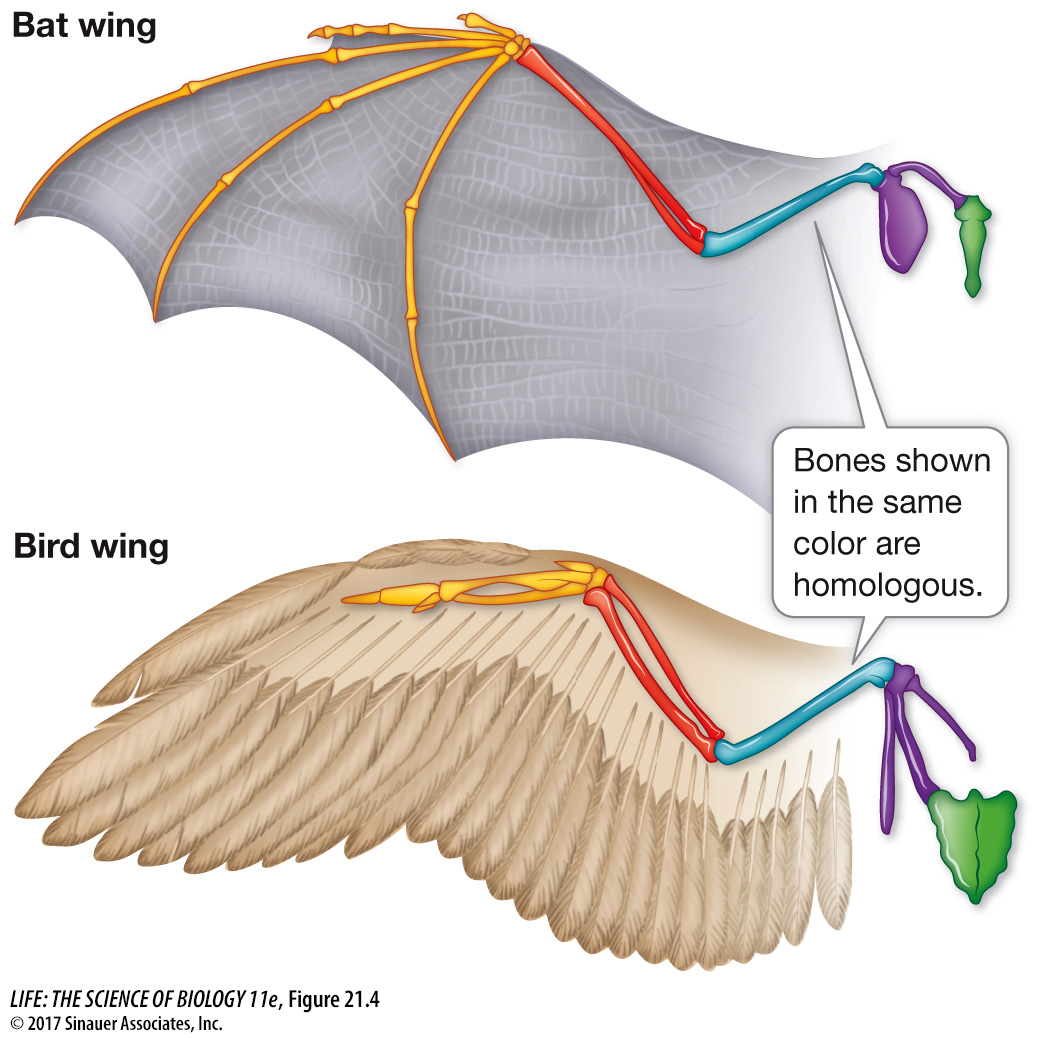Derived traits provide evidence of evolutionary relationships
In tracing the evolution of a character, biologists distinguish between ancestral and derived traits. Each character of an organism evolves from one condition (the ancestral trait) to another condition (the derived trait). Derived traits that are shared among a group of organisms and are also viewed as evidence of the common ancestry of the group are called synapomorphies (syn, “shared”; apo, “derived”; morph, “form,” referring to the “form” of a trait). Thus the vertebral column is considered a synapomorphy—
Not all similar traits are evidence of relatedness. Similar traits in unrelated groups of organisms can develop for either of the following reasons:
Superficially similar traits may evolve independently in different lineages, a phenomenon called convergent evolution. For example, although the wing bones of bats and birds are homologous, having been inherited from a common tetrapod ancestor, the wings of bats and birds are not homologous because they evolved independently from the forelimbs of different nonflying ancestors (Figure 21.4). Functionally similar structures that have independent evolutionary origins are called analogous characters.
A character may revert from a derived state back to an ancestral state in an event called an evolutionary reversal. For example, the derived limbs of terrestrial tetrapods evolved from the ancestral fins of their aquatic ancestors. Then, within the mammals, the ancestors of modern cetaceans (whales and dolphins) returned to the ocean, and cetacean limbs evolved to once again resemble their ancestral state—
fins. The superficial similarity of cetacean and fish fins does not suggest a close relationship between these groups. Instead, the similarity arises from evolutionary reversal.

Similar traits generated by convergent evolution and evolutionary reversals are called homoplastic traits or homoplasies.
Media Clip 21.1 Morphing Arachnids
A particular trait may be ancestral or derived, depending on our point of reference. For example, all birds have feathers. We infer from this that feathers (which are highly modified scales) were present in the common ancestor of modern birds. Therefore we consider the presence of feathers to be an ancestral trait for any particular group of modern birds, such as the songbirds. However, feathers are not present in any other living animals. In reconstructing a phylogeny of all living vertebrates, the presence of feathers is a derived trait found only among birds, and thus is a synapomorphy of the birds.